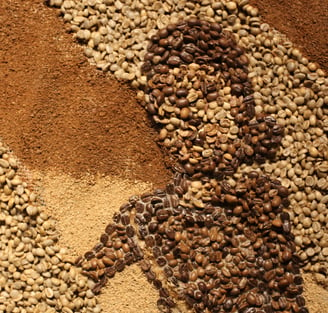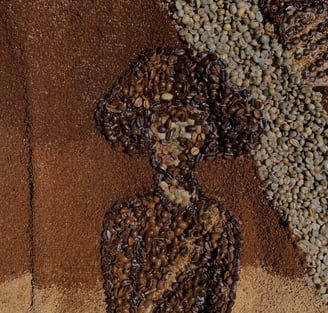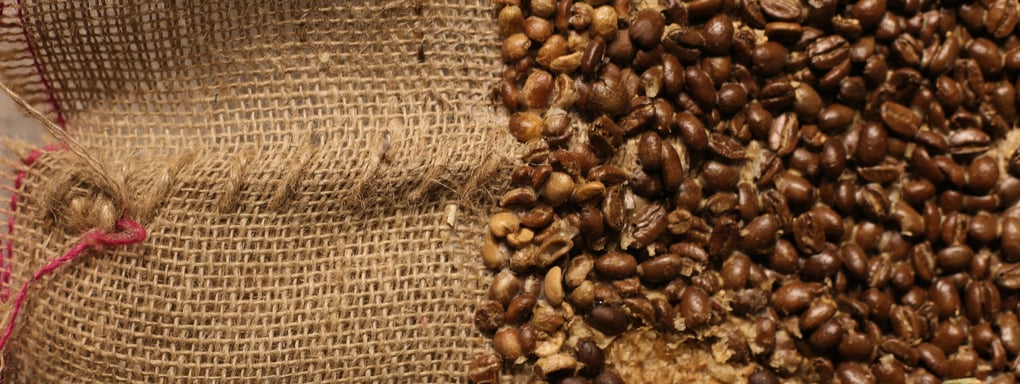To Those on the Plantations
2020 | Coffee jute sack, coffee beans, grinds & chaff
This work is a six by five-foot mural made of coffee beans, grounds, and chaff. These materials are attached to jute coffee sacks that have been sewn together. The use of the jute fabric and the hanging installation of this mural give it a tapestry-like quality. The coffee bean elements are arranged to convey an image of a Latin American coffee plantation. From raw to darkly roasted, variously treated beans and grounds are utilized to infer form and value. The scene depicts several plantation workers—some with sacks, some with baskets—all amongst the rows of coffee crop that stretch toward the horizon.
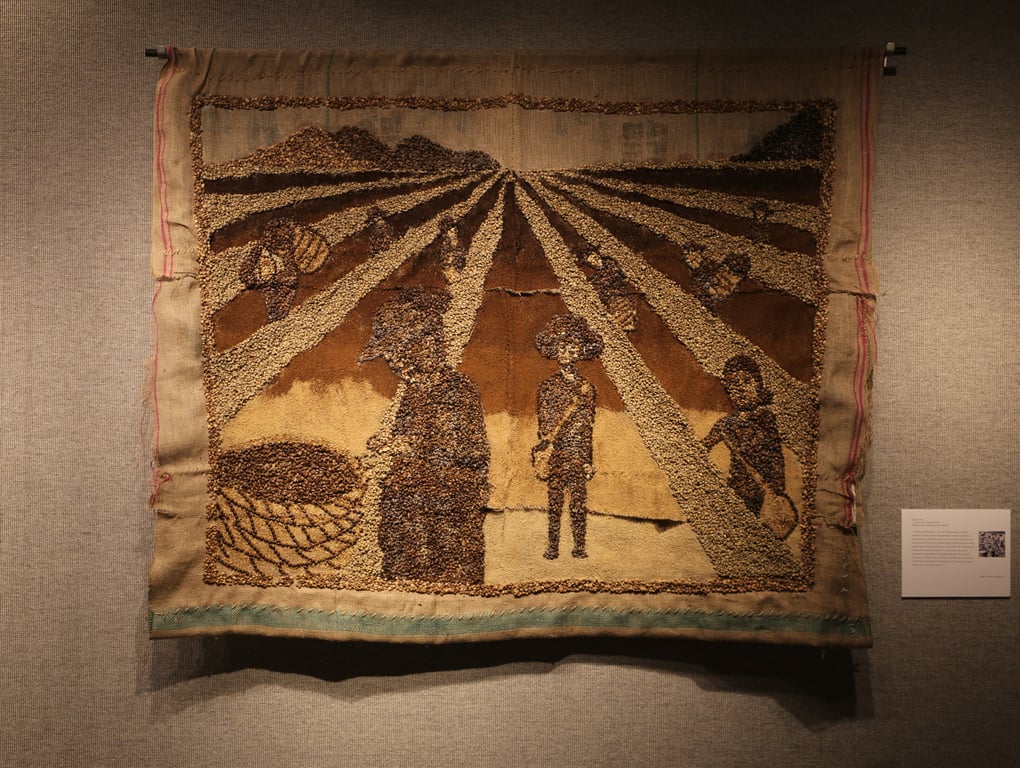


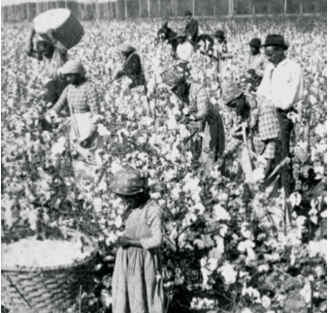
Image Courtesy of Britannica

